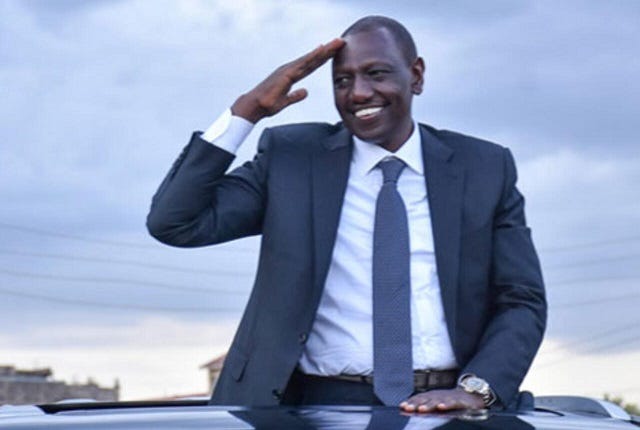🇰🇪 Intelligence Brief | “Shoot to the Leg” — Ruto’s Brutal Order as Kenya’s Protest Death Toll Climbs to 31
Ujasusi Blog’s East Africa Monitoring Team | 🗓️09 July 2025 | 🕜2335 BST
🧩 Background: The Saba Saba Protests Turn Bloody
Kenya’s 2025 Saba Saba commemorations—initially a symbolic remembrance of democratic struggle—have morphed into a battleground of state and civilian confrontation. At least 17 counties experienced unrest on Monday, 7 July, resulting in the deaths of 31 civilians, according to the Kenya National Commission on Human Rights (KNCHR).
The protests, largely Gen-Z-led, began as peaceful rallies against perceived authoritarianism, poor governance, rising taxation, and unemployment. However, they spiralled into deadly confrontations with police forces, prompting widespread condemnation over the government’s use of force.
🛑 Ruto Breaks Silence: Declares War on Protest Instigators
In his first public remarks since the chaos, President William Ruto abandoned his previously restrained stance and unleashed a direct and uncompromising warning to both the rioters and their alleged sponsors. Speaking during a police housing project launch in Kilimani, Nairobi, on Wednesday, 9 July 2025, Ruto framed the protests not merely as public dissent but as a coordinated assault on the Republic.
“Enough is enough. Those who attacked our police officers and security installations have declared war against Kenya. It is unacceptable,” the President stated emphatically.
🎯 Targeting “Sponsors of Chaos”: Political Elite Under Fire
Ruto specifically accused unnamed politicians and wealthy figures of funding youth gangs to attack public infrastructure and private businesses. His speech marked a clear shift toward securitising domestic dissent, painting the protesters as pawns of subversive elites aiming to destabilise the nation.
“We are coming after you. You cannot sponsor violence in Kenya and expect to go scot-free,” he warned, signalling imminent crackdowns.
The declaration threatens to transform Kenya’s already fragile political space into a zero-sum contest, especially with mounting calls for early elections under the #RutoMustGo campaign.
🔫 New Rules of Engagement: ‘Shoot in the Leg’ Directive
In a controversial directive that could intensify scrutiny from human rights watchdogs, President Ruto explicitly authorised police officers to shoot protesters in the legs if they are found attacking businesses or attempting arson.
“Mtu kama huyo apigwe risasi mguu, aende hospitali na akisha pona aende kortini,” Ruto stated in Swahili. (“Shoot them in the leg, send them to the hospital, then to court.”)
This marks a dangerous escalation in the state’s posture, potentially emboldening law enforcement to act with disproportionate force while side-stepping extrajudicial killing accusations.
🧨 Political Stakes: Dismissing Opposition Threats
Ruto also responded defiantly to opposition rhetoric, suggesting a non-electoral transition, vowing to complete his term through the constitutionally mandated 2027 general elections.
“This is a democratic country… those who believe they can change the government through violence—let them try,” he challenged.
This rhetoric may deepen the polarisation in the country and alienate reformists, especially as Ruto contrasts his leadership with his predecessors.
🧮 Framing the Youth Uprising: “Unemployment Isn’t New”
The President deflected blame regarding the economic grievances driving youth-led protests, insisting that unemployment predated his regime and that his administration had made progress in job creation.
“Did unemployment start with this regime?” he posed rhetorically, suggesting that his administration was being unfairly targeted.
This sentiment, however, risks appearing dismissive in the face of mounting economic despair, with inflation, taxation, and job scarcity all fuelling discontent.
📉 Repression vs. Reform: Ruto’s Hardline Gamble
The President’s latest remarks underscore a strategic pivot away from dialogue and toward coercion. By classifying protest activity as terrorism or insurrection, the government positions itself to justify:
Increased police militarisation
Surveillance of political rivals
Criminalisation of online dissent
This aggressive posture may galvanise further resistance, especially among Gen-Z activists, while simultaneously widening Kenya’s international human rights liability.
🔍 Human Rights Spotlight: Excessive Force and Accountability
As the death toll continues to rise—with 31 reported fatalities during the Saba Saba protests—international observers, including Amnesty International and Human Rights Watch, are closely monitoring developments.
Ruto’s directive to maim rather than kill may be framed as a harm-reduction tactic, but it could equally be seen as an endorsement of deliberate, state-sanctioned violence, violating both national laws and international norms.
🌍 Regional Implications: Kenya as a Democratic Bellwether
Kenya’s stability is central to East Africa’s economic and security architecture. Ruto’s approach to domestic dissent sets a precedent for how other governments in the region might treat mass mobilisation.
If protest criminalisation becomes normalised under Ruto’s leadership, this could embolden illiberal trends in countries such as Uganda, Ethiopia, and Tanzania—where political suppression and electoral manipulation are already major concerns.
📲 The Social Media Battlefield: #RutoMustGo Gains Traction
The virality of hashtags like #RutoMustGo, #JusticeForVictims, and #SabaSabaMassacre has turned social media into a digital frontline for both activists and the state. Ruto appeared visibly agitated at being targeted online:
“Moi, Kibaki, and Uhuru were all Presidents. Why this disrespect? We are all Kenyans,” he lamented, questioning the unique intensity of opposition against him.
However, critics argue that Ruto’s leadership style—perceived as autocratic and unaccountable—is precisely what differentiates him from past regimes.


